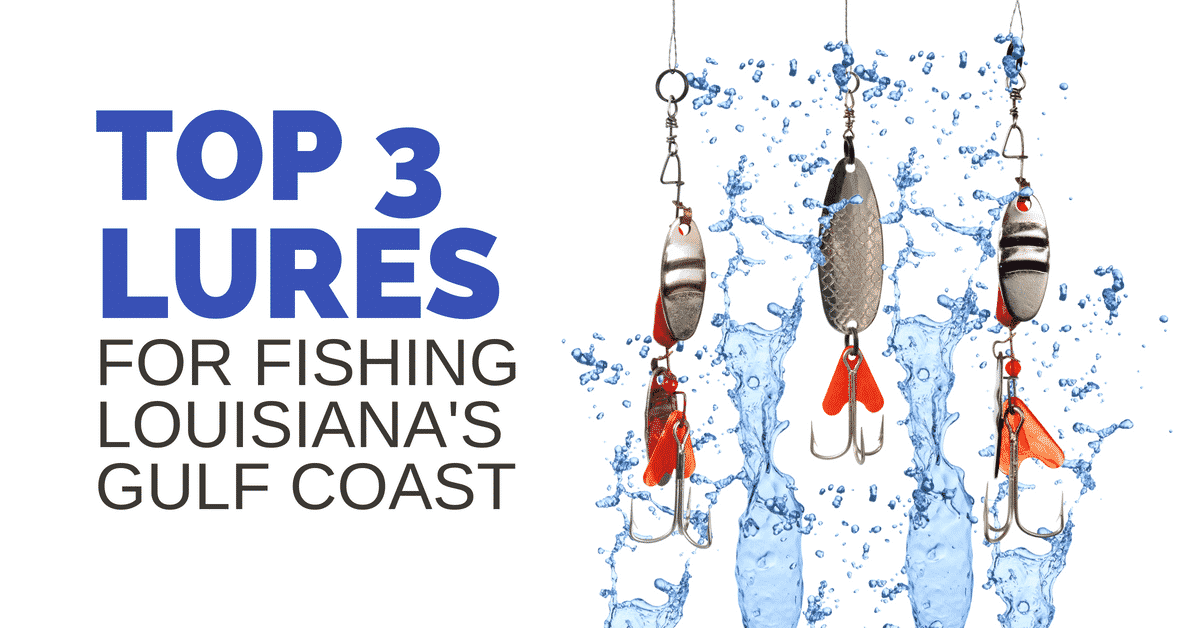3 Top Lures for Louisiana’s Gulf Coast
With countless lures available for fishing on the Gulf of Mexico, narrowing your selections down to three types will help you to get the bigger fish and gain the experience needed to draw in those monsters from out of hiding. Although there are hundreds of lures to choose from, by narrowing the list to three, you won’t get frustrated or overwhelmed when you make the call to the Louisiana offshore fishing charter captain to book your next fishing excursion.
Choosing the Right Jigs to Catch Bigger Fish
Make no mistake about it, the charter boat captain can lead you to where the monster fish are hiding, but he can’t reel them in the boat for you. The jig consists of nothing more than a weighted head that is attached to a hook, allowing you to attach the soft bait of your choice to the body or trailer of the jig. The jig will be cast far away from the charter boat, then followed by occasional jerking of the rod tip. This movement is the key to attracting the bass or redfish hiding around the oil rigs or bridge pillars because it simulates the fish falling and rising the water column. This simulation of an injured fish is the dinner bell to hungry fish, and the predators will come in fast to take action before another fish gets the free meal. Regardless if the charter boat fishing captain has taken you offshore or inshore, you will have little trouble reeling in snapper, redfish, bass, and sea trout, with your jigs. The jigs are ideal in rough seas too, even high winds will not negatively affect the movement of the jig on the water.
Although this is one of the most popular lure types used out in the basin of the Mississippi, many anglers don’t use the jigs correctly and come home empty-handed. Although you feel that urge to reel the jig in fast, patience is the key. Reel in too fast or jerk the line too hard, and the fish will scatter. Jerking the line too hard pulls the bait out of the strike zone.
Topwater Lures Making Bigger Fish Strike
It doesn’t matter if you are hunting for bluefish, snook, redfish, sea trout, or amberjack, the topwater lures out on the Gulf of Mexico can help get those bigger predators to come out of hiding quickly. The topwater lure glides on the surface of the water, attracting big fish below to come from deep below to strike at the lure. In this area of Louisiana, the two best types of topwater lures are the walk the dog type stick baits and poppers & chuggers. The walk the dog baits are referred by fishermen as spooks and date back to 1939 as the industry standard in this region. The way to attract those huge trophy fish hiding deep in the Gulf of Mexico is to first point your rod down at the surface of the water, then move the tip very quickly in a side-to-side motion, simulating walking the dog. This motion is a dinner bell to certain fish who will splash around as they attack the bait quickly.
When using poppers & chugger out on the charter fishing boat, you’ll need to cast that lure out far, so make sure you have plenty of room. Once the lure hits the surface of the water, jerk the lure back with very small and swift motions of the tip of your rod. This quick action causes the bait to pop, displacing water and creating an audible splash and sound that predators can spot instantly. The noisy action of the lure and the constant splashing simulates a wounded fish, an easy way to draw out fish hiding near oil rigs, seawalls, and docks.
Why Crankbaits are Your Best Chance to Catch Fish
Make no mistake about it, the crankbait has been rated the best artificial fishing lure by avid fishermen looking to catch bigger fish. Easy to use, they create lifelike actions and patterns in the water, irresistible to most fish in the Gulf of Mexico. Simply cast out the lure, then crank it back, that swimming action of the lure gets bigger fish exciting about swooping in for a quick and easy meal. Choosing the right crankbait is all about knowing how deep the bait is designed to swim. Look closely at the bill of the crankbait, the length compared to size will tell you how deep the bait will swim. Short bills tend to run shallow, flat and long bills run much deeper.
Even though the crankbait is a breeze to use, choosing the wrong depth bait for the fishing environment the boat is stopping at could reduce your catches. If the lure gets too low and gets entangled with seaweed, remove it immediately because predators know fish usually are not swimming tangled in seaweed or other debris.
When you call the charter boat fishing captain to book your next fishing excursion, be sure to inquire about the types of areas the boat will be stopping so you can choose your lures according.



